Spectacular Stargazing Sites
“The sight of the stars always makes me dream.” —Vincent van Gogh
Like Van Gogh, I’ve always loved looking at the stars. To this day, whenever I am outside in my suburban Philadelphia yard on a clear night, I’ll make sure to spend a few minutes gazing upward. If I’m lucky, I can see hundreds of stars and quite a few constellations sweeping across the black expanse.
Bettymaya Foott, an engagement associate for DarkSky International, has had quite a different experience. Growing up in rural Utah, she spent countless nights lying on her trampoline and admiring a sky filled with not only stars as far as her eyes could see but also heavenly bodies like the Milky Way. The difference? Her hometown was located in a dark-sky area of the country.
If you’re willing to travel, there are dozens of such places waiting to be explored: a total of 247 certified dark-sky sites exist across the globe, more than half of which can be found in the United States. And the experience is like, well, night and day. You can see around 50 stars from dusk until dawn in an urban area affected by light pollution and 500 in a suburban one, but in a truly dark sky, the number of visible stars can expand to 15,000—making these spots must-see destinations for young and old alike.
Before you go
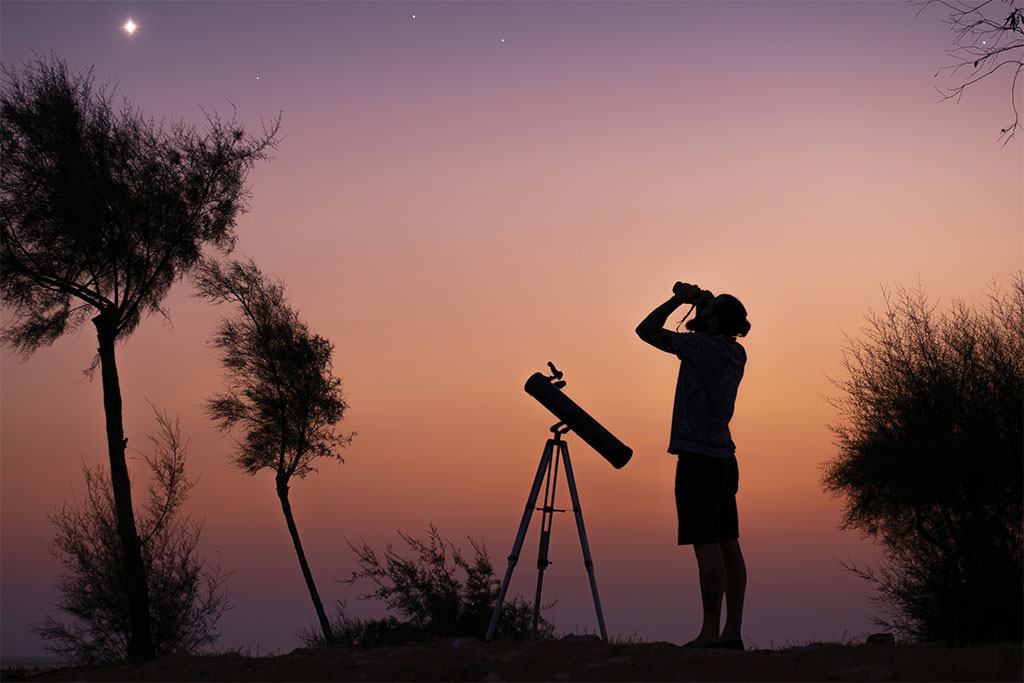
So how should you begin your stargazing adventure? The best first step is to visit the DarkSky website, which features a map of International Dark Sky Places. “Look up events hosted at dark-sky parks near you, or just go on your own self-guided tour of the night sky,” Foott suggests. Once you’ve decided on your location, determine the best time to go. Ideally, you’ll want to visit when the skies are clear, though that can be difficult to plan for given the weather’s unpredictability. However, you can keep in mind the phases of the moon; take your trip during the new moon when it is practically invisible, and you can prevent its brightness from interfering with your view. Check out this lunar calendar to verify the timing for your chosen locale.
Further, make sure to brush up on your etiquette so you don’t disturb your fellow stargazers. Namely, try to minimize your light pollution as much as possible: arrive before dark, park with your headlights facing away from the site for when you leave, and utilize flashlights with red filters. Look into your destination’s regulations as well—some may have specific rules and be more or less strict than others. And don’t forget your binoculars or telescope! “I would also recommend using one of the many free planetarium apps that tell you what constellation, star, or planet you’re looking at when you point your phone to the night sky,” Foott adds. “It’s really fun.”
Where to go dark
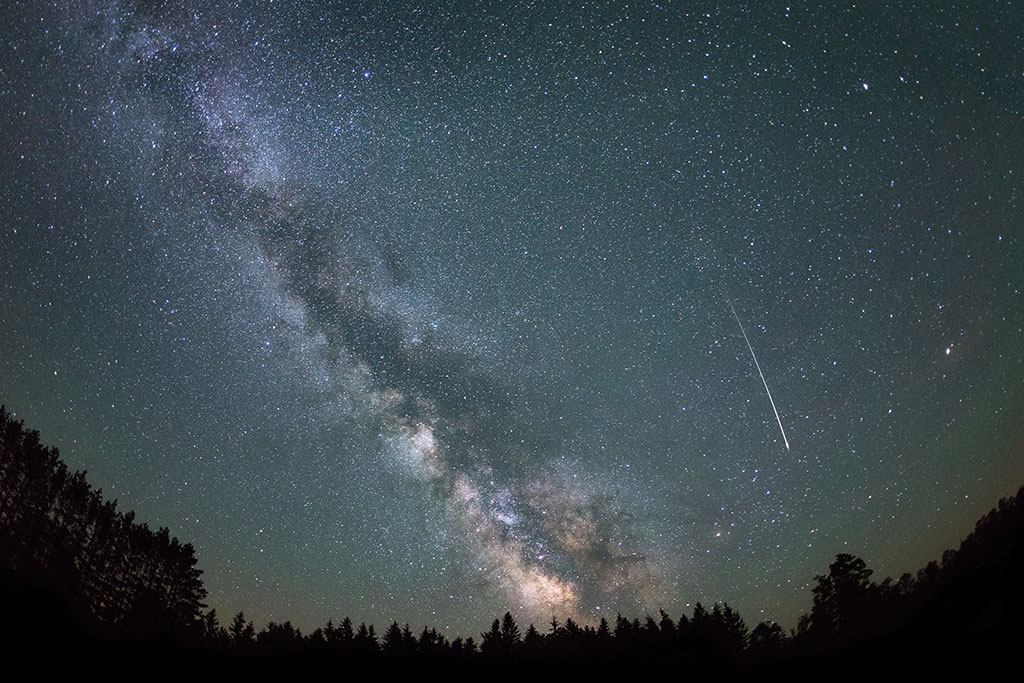
Most dark-sky areas are clustered in the western third of the country, but you can find them from coast to coast. Not surprisingly, the majority are national and state parks. Here are just some of the notable star-filled sites where seeing is believing.
Cherry Springs State Park (Pennsylvania)
The only Dark Sky Place in the Northeast outside of Maine, Cherry Springs’ stargazing field can be found atop a 2,300-foot mountain, providing a 360-degree view of the stars above. You can choose to settle in at its short-term spot or at either of its two campgrounds: one with loose guidelines for casual astronomers and one with firm restrictions for serious observers.

Big Cypress National Preserve (Florida)
Florida features three destinations for peak stargazing, with Big Cypress being the southernmost. It hosts free monthly educational events for the public from December through March, including a ranger-led astronomy program and constellation tours. Note that there is no seating available, so don’t forget to bring your own. (Another essential to remember: bug spray to ward off hungry mosquitoes.)
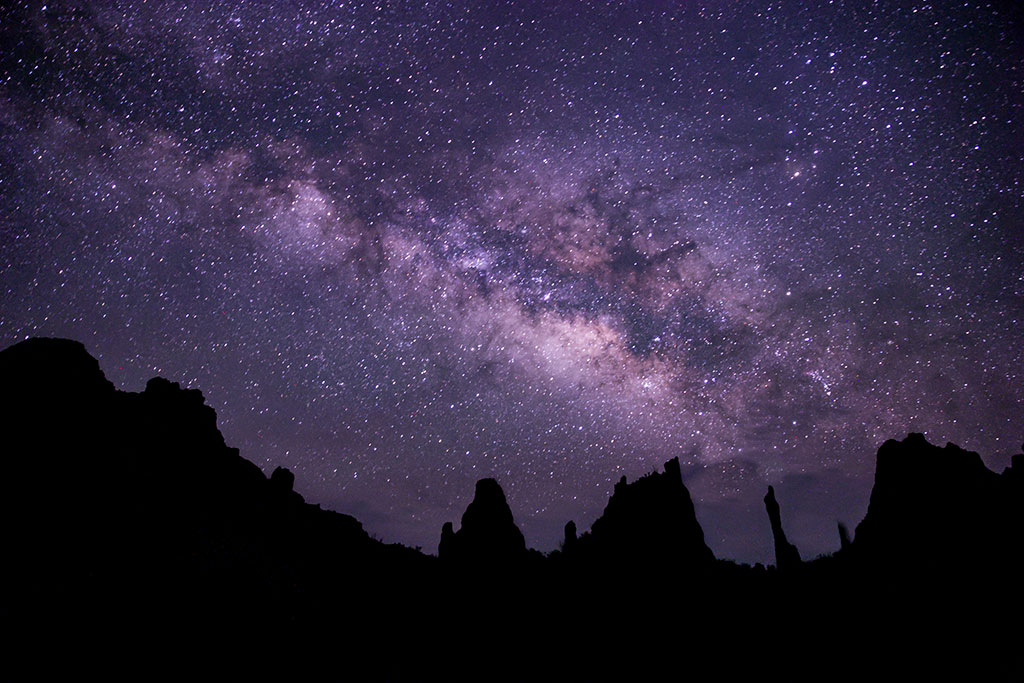
Big Bend National Park (Texas)
Big Bend holds the distinction of having the least light pollution of any national park unit in the continental United States, ensuring that every visitor gets an otherworldly experience. Can’t wait or are unable to visit? Explore its Nighttime Sky Quality map, which tracks the visibility of the stars in the area and how that has changed over time.
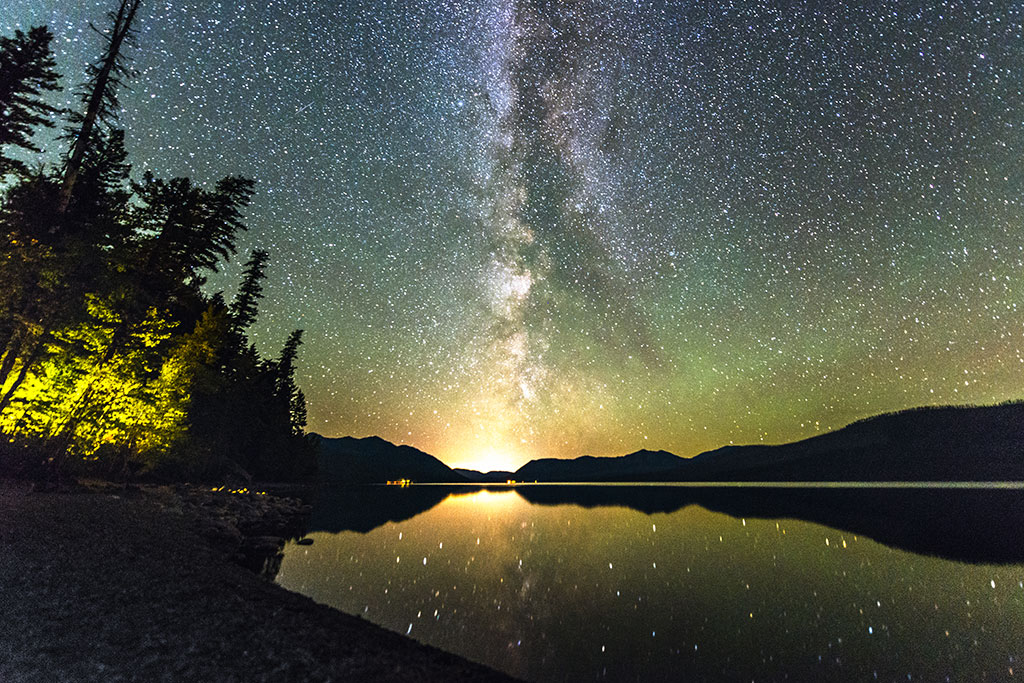
Glacier National Park (Montana)
Though this location may be chillier than other options, it’s well worth a trip for the unique experience of setting up at the edge of Lake McDonald and seeing the stars reflected in the water. Glacier National Park is also unique in that it has a dark-sky sister park, Waterton Lakes National Park, about an hour across the Canadian border, allowing you to potentially double up on your celestial experience.

The Colorado Plateau
Foott highly recommends this area for a scenic stargazing adventure. “Here you have a juxtaposition of the incredible night sky and the beautiful rolling canyons, arches, red rocks, and rivers,” she says. “It’s the coolest combination in the world.” Amid the 240,000-square-mile expanse that includes parts of Colorado, Utah, Arizona, and New Mexico, you’ll find many locales offering such breathtaking settings. Consider Chaco Culture National Historical Park in New Mexico; Colorado’s Mesa Verde National Park, the world’s one-hundredth Dark Sky Park; Grand Canyon National Park in Arizona; and Utah’s Natural Bridges National Monument, the first-ever Dark Sky Park. (“It’s super dark and super beautiful,” Foott adds.)
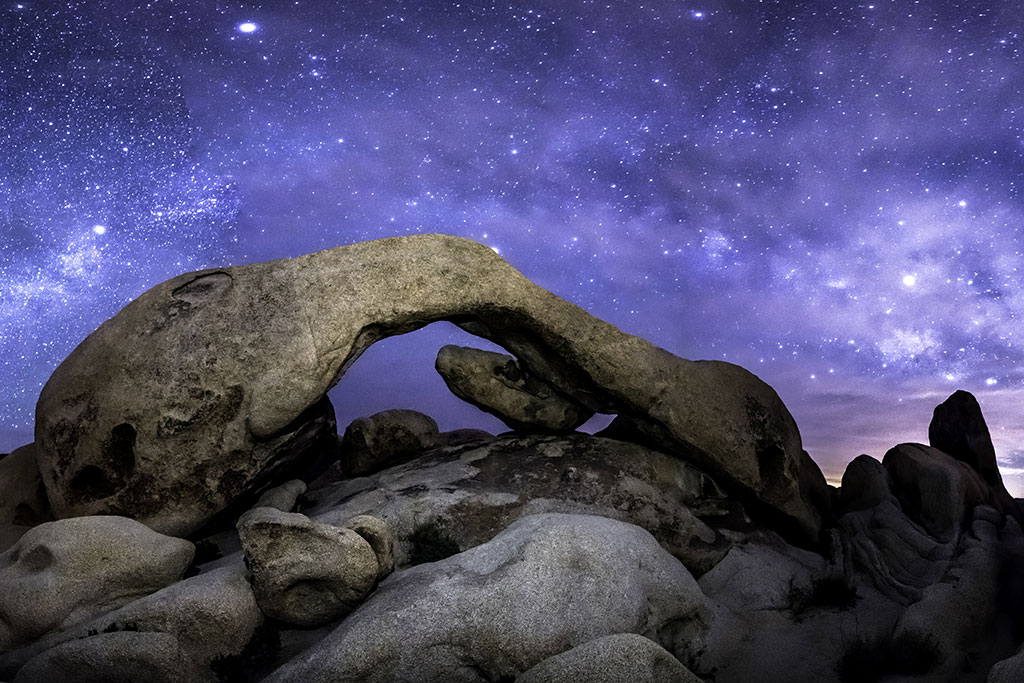
Joshua Tree National Park (California)
Located in the Southern California desert, Joshua Tree is excellent for stargazing in part because it is located 3,000 to 6,000 feet above sea level, depending on where in the park you are. It’s recommended that you venture to the east end to see the stars—being 300 miles from the nearest city, the area is ultradark.
The night sky is a constant source of awe and inspiration, but you may need to travel some distance to experience it in all its glory. By visiting a Dark Sky Place, you’ll give yourself access to not only the infinite vastness of the cosmos but also the endless wonder that accompanies it.
For more info, visit darksky.org

